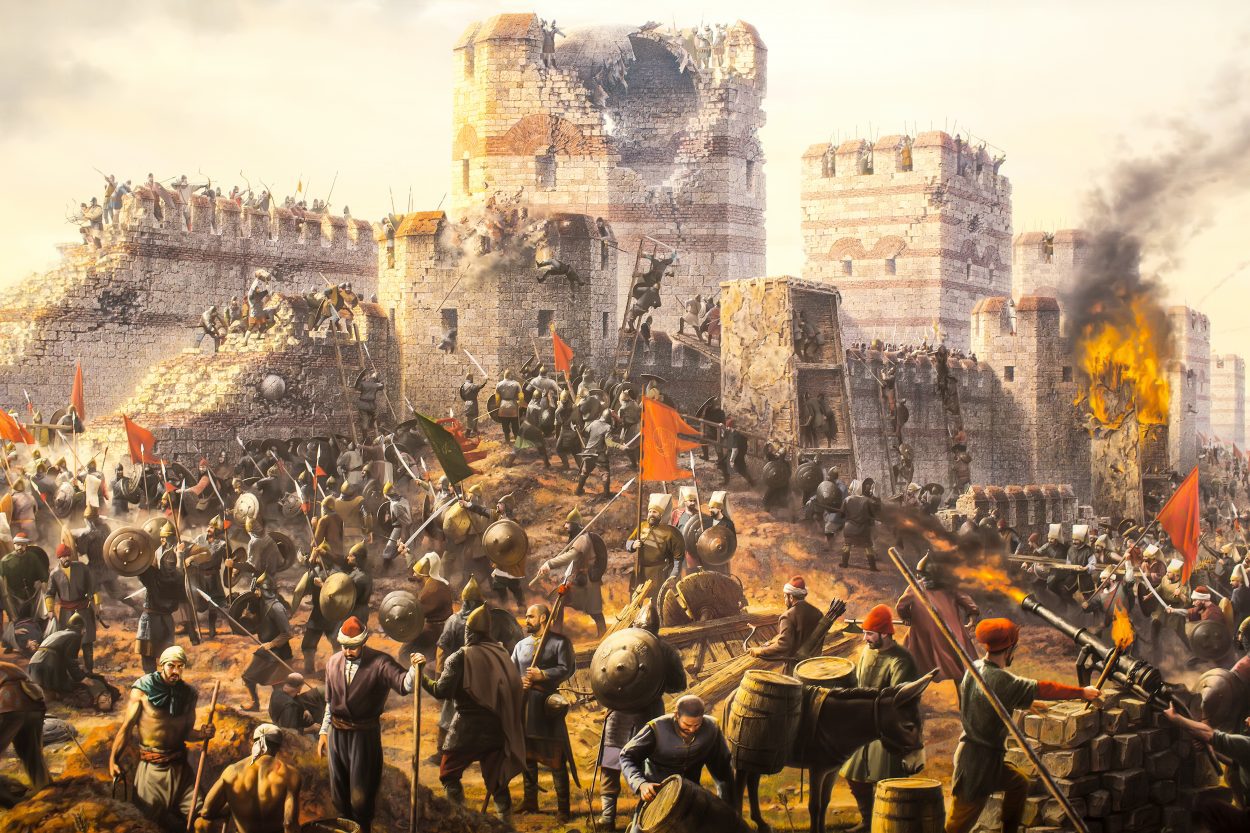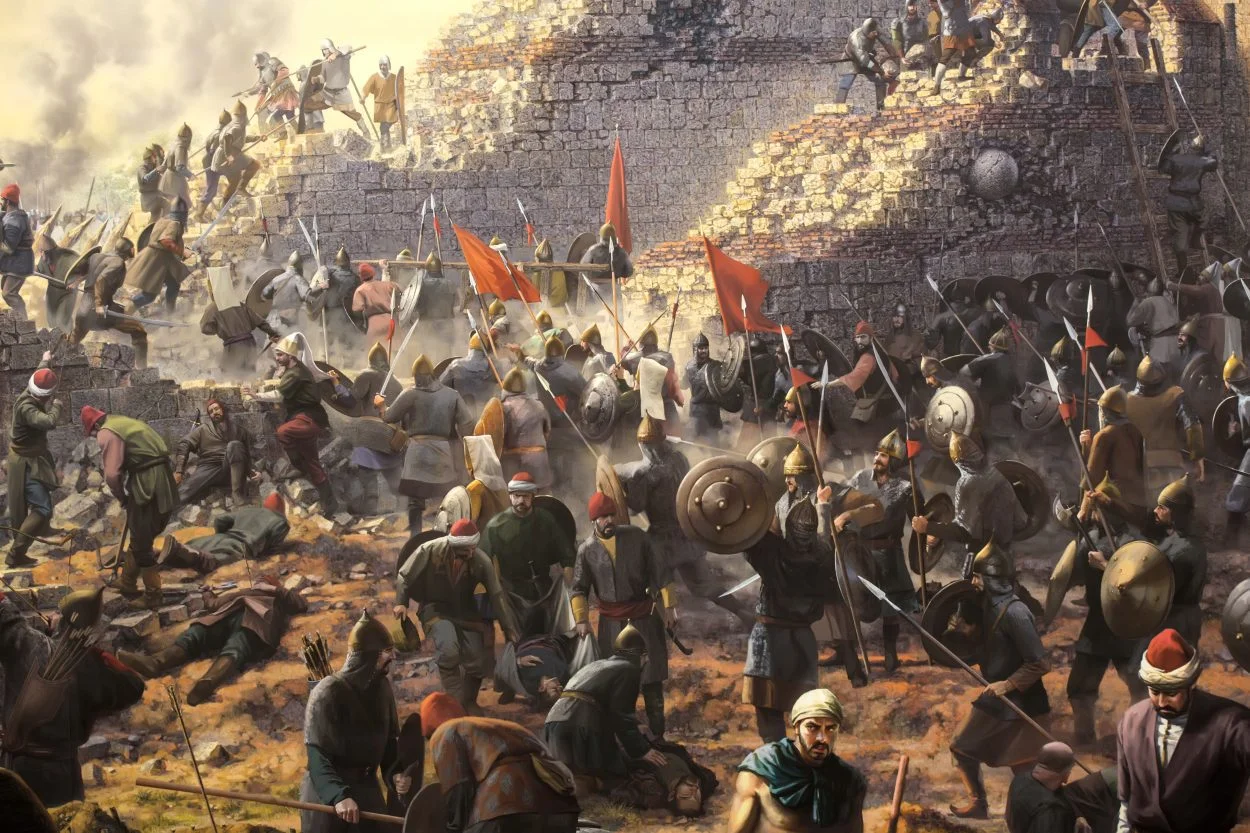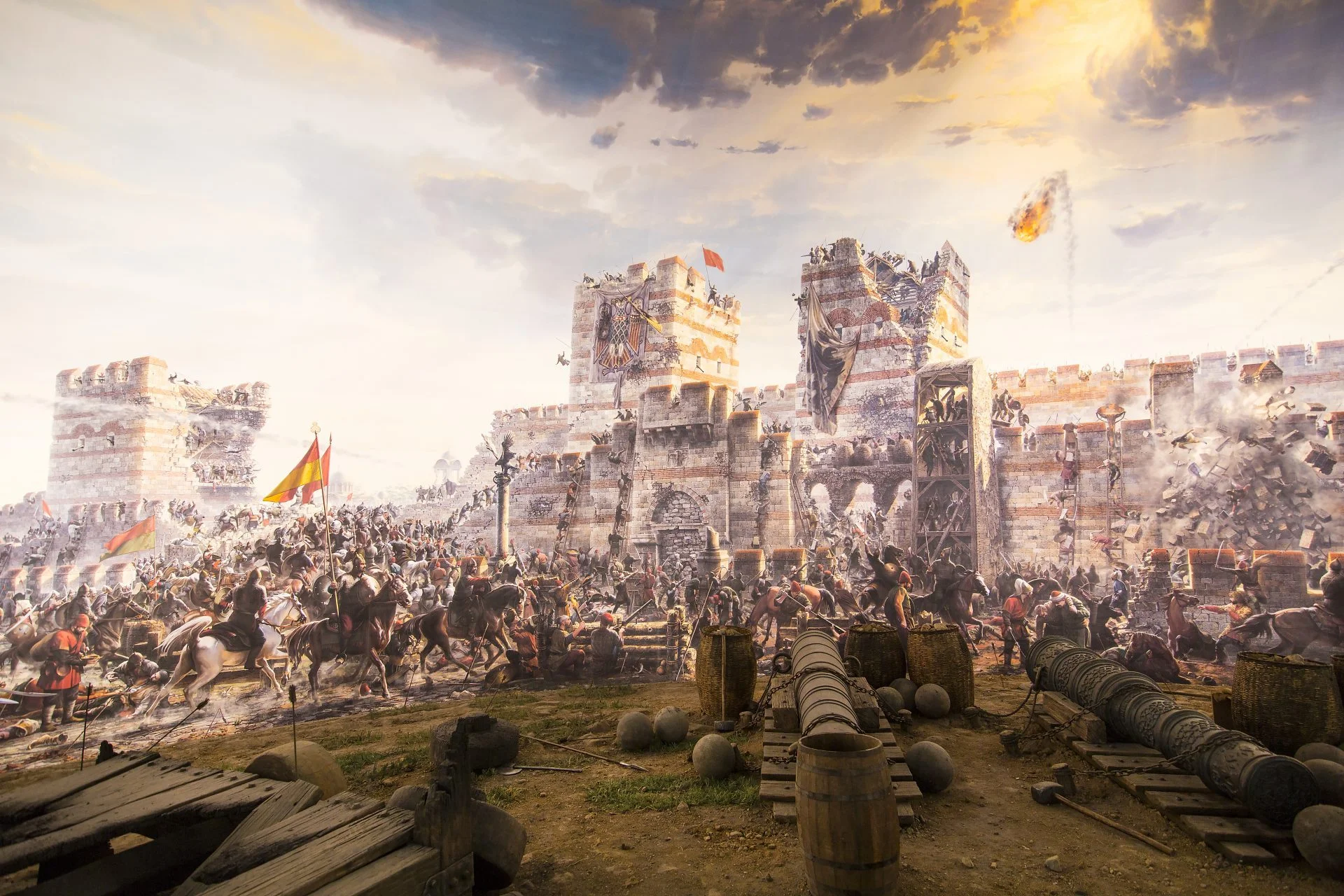The fall of Constantinople marks the end of the Byzantine Empire (and effectively the end of the Roman Empire) when the city was captured by forces of the Ottoman Empire in AD 1453.
Constantinople was the capital of the Roman/Byzantine Empire, founded in AD 330 by Emperor Constantine the Great at the Greek city of Byzantion (more commonly known by the later Latin Byzantium) between the Golden Horn and the Sea of Marmara in the Bosporus strait.
Constantine named the city Nova Roma, meaning ‘New Rome’, emerging as the sole capital of the Roman Empire after the fall of the Western Roman Empire.
The city was famed for its architectural masterpieces, such as the Hagia Sophia, the cathedral of the Eastern Orthodox Church (which served as the seat of the Ecumenical Patriarchate), the Imperial Palace, the Hippodrome and its opulent aristocratic palaces.
Constantinople was protected by a vast system of defensive land walls, most notably the famous double line of the Theodosian Walls from the 5th century AD, which defended the city from sieges by the Avar-Sassanian coalition, Arabs, Rus’ and Bulgars among others.
With the advent of the Ottoman Empire in AD 1299, the Byzantine Empire began to lose territories to the Turks, for which the conquest of Constantinople became a crucial objective. The city was already in decline after the sacking by Crusaders during the Fourth Crusade and the devastation by the Black Death which killed almost half the population.
By AD 1450, Byzantine territory had shrunk to just a few miles outside of the city gates, leaving the once powerful Empire that dominated the Mediterranean a mere city state (excluding the emergence of the Empire of Tribizond).
When Mehmed II succeeded Sultan Murad II in AD 1451, he devoted himself to strengthening Ottoman forces in preparation for attacking Constantinople. On the European banks of the Bosphorus he constructed the fortress of Rumelihisarı, which paired with the fortress of Anadolu Hisarı on the opposite side of the straits gave the Ottomans complete control of sea traffic that strangled the city.
Realising Mehmed’s intentions, the Byzantine Emperor Constantine XI sought support from the west by proposing a union between the eastern and western churches. Although an agreement was passed by the Byzantine imperial court, Pope Nicholas V’s influence was unable to sway the Western kings and princes to send their forces.

The siege of Constantinople began on April 6th AD 1453. Byzantine forces defending the city totalled around 7,000 men (with around 50,000 civilians and refugees seeking shelter behind the city walls), who stood against a force of between 50,000–80,000 Ottoman soldiers.
Attempts to attack the city from the sea were thwarted by a giant chain that blocked the entrance to the Golden Horn. Mehmed ordered the construction of a road of greased logs and circumvented the chain by dragging his ships overland, forcing the Byzantines to reduce their garrisons on the land wall to protect the city sea walls.
Multiple land assaults against the Theodosian Walls were repelled with large Ottoman losses, resulting in Mehmed to offer lifting the siege if the Byzantines surrendered the city. Mehmed promised he would allow the emperor and the city inhabitants to leave with their possessions, moreover, he would recognise the emperor as governor of the Peloponnese.
Constantine responded by saying: “As to surrendering the city to you, it is not for me to decide or for anyone else of its citizens; for all of us have reached the mutual decision to die of our own free will, without any regard for our lives.”

The final assault began on the 26th May that same year with successive waves of soldiers that overwhelmed the defenders at several points along the city walls.
Sources suggest that Mehmed II and his army were restrained upon entering the city, instead choosing to execute mainly those who refused to surrender. Although a contemporary account (possibly biased) by Leonard of Chios said: “All the valuables and other booty were taken to their camp, and as many as sixty thousand Christians who had been captured. The crosses which had been placed on the roofs or the walls of churches were torn down and trampled. Women were raped, virgins deflowered, and youths forced to take part in shameful obscenities. The nuns left behind, even those who were obviously such, were disgraced with foul debaucheries”.
The loss of Constantinople was seen as a crippling blow to Christendom, exposing the West to a foe that could match the armies of Europe and lead to centuries of conflict. Many Greeks fled the city and found refuge in the Latin West, bringing with them knowledge and documents from the Greco-Roman tradition to Italy and other regions that helped to propel the Renaissance.
Mehmed declared himself Kayser-i Rum, literally “Caesar of Rome”, that is, of the Roman Empire, though he was remembered as “the Conqueror”. He founded a political system that survived until 1922 with the establishment of the Republic of Turkey.
Header Image Credit : Lestertair – Shutterstock





